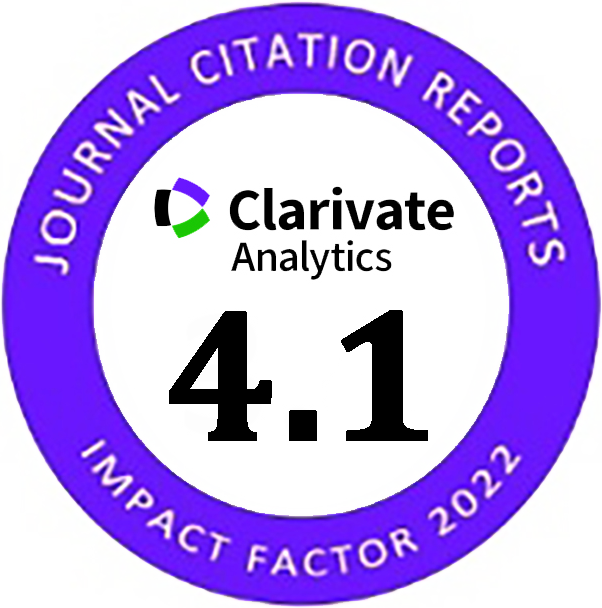Equivalent Modulus of Asphalt Concrete Layers
Abstract
A flexible pavement structure usually comprises more than one asphalt layer, with varying thicknesses and properties, in order to carry the traffic smoothly and safely. It is easy to characterize each asphalt layer with different tests to give a full description of that layer; however, the performance of the whole; asphalt structure needs to be properly understood. Typically, pavement analysis is carried out using multi-layer linear elastic assumptions, via equations and computer programs such as KENPAVE, BISAR, etc. These types of analysis give the response parameters including stress, strain, and deflection at any point under the wheel load. This paper aims to estimate the equivalent Resilient Modulus (MR) of the asphalt concrete layers within a pavement structure by using their individual MR values. To achieve this aim, eight samples were cored from Iraqi Expressway no. 1; they had three layers of asphalt and were tested to obtain the MR of each core by using the uniaxial repeated loading test at 25 and 40 °C. The samples were then cut to separate each layer individually and tested for MR at the same testing temperatures; thus, a total of 60 resilient modulus tests were conducted. A new approach was introduced to estimate the equivalent MR as a function of the MR value for each layer. The results matched the values obtained by KENPAVE analysis.
Keywords
References
Khazanovich, Lev, and Qiang (Chuck) Wang. “MnLayer.” Transportation Research Record: Journal of the Transportation Research Board 2037, no. 1 (January 2007): 63–75. doi:10.3141/2037-06.
Dalla Valle, Paola, and Nick Thom. “Reliability in Pavement Design.” Proceedings of 6th Eurasphalt & Eurobitume Congress (June 30, 2016). doi:10.14311/ee.2016.033.
Al-Mosawe, Hasan. “Prediction of Permanent Deformation in Asphalt Mixtures.” PhD diss., University of Nottingham, (2016).
Ahmed, Mesbah U., and Rafiqul A. Tarefder. "Incorporation of GPR and FWD into pavement Mechanistic-Empirical design." Construction and Building Materials 154 (2017): 1272-1282.
Shafiee, Mohammad Hossein, Leila Hashemian, and Alireza Bayat. "Seasonal analysis of flexible pavement response to falling weight deflectometer." International Journal of Pavement Research and Technology 8, no. 5 (2015): 346-352.
Varma, Sudhir, and M. Emin Kutay. "Backcalculation of viscoelastic and nonlinear flexible pavement layer properties from falling weight deflections." International Journal of Pavement Engineering 17, no. 5 (2016): 388-402.
Ullidtz, Per. “Pavement Analysis. Developments in Civil Engineering.” Elsevier, Amestrdam 3, no. 5556 (1987): 034.
Subagio, Bambang S., Hernadi T. Cahyanto, Arif Rachman, and Siti Mardiyah. “Multi-Layer Pavement Structural Analysis Using Method of Equivalent Thickness Case Study: Jakarta—Cikampek Toll Road.” Journal of the Eastern Asia Society for Transportation Studies 6 (2005): 55-65.
Senseney, Christopher T., and Michael A. Mooney. “Characterization of Two-Layer Soil System Using a Lightweight Deflectometer with Radial Sensors.” Transportation Research Record: Journal of the Transportation Research Board 2186, no. 1 (January 2010): 21–28. doi:10.3141/2186-03.
Crowder, Jesse, and P. Eng. “Assessing Spring Load Restrictions Using Climate Change and Mechanistic-Empirical Distress Models.” (2008).
Cafiso, Salvatore, and Alessandro Di Graziano. “Evaluation of Flexible Reinforced Pavement Performance by NDT.” In TRB, 82st Annual Meeting, Washington, (2003).
Witczak, M. W., Andrei, D., & Houston, W. N. “Guide for Mechanistic-Empirical Design of New and Rehabilitated Pavement Structures.” Transportation Research Board of the National Research Council, (2004): 1-91.
El-Badawy, Sherif M., Myung Goo Jeong, and Mohamed El-Basyouny. “Methodology to Predict Alligator Fatigue Cracking Distress Based on Asphalt Concrete Dynamic Modulus.” Transportation Research Record: Journal of the Transportation Research Board 2095, no. 1 (January 2009): 115–124. doi:10.3141/2095-12.
Sotil, Andres. “Use of the Dynamic Modulus E Test as Permanent Deformation Performance Criteria for Asphalt Pavement Systems.” (2006): 6139-6139.
Lu, Qing, Per Ullidtz, Imad Basheer, Khalid Ghuzlan, and James M. Signore. “CalBack: Enhancing Caltrans Mechanistic-Empirical Pavement Design Process with New Back-Calculation Software.” Journal of Transportation Engineering 135, no. 7 (July 2009): 479–488. doi:10.1061/(asce)te.1943-5436.0000010.
Pologruto, Michael. “Procedure for Use of Falling Weight Deflectometer to Determine AASHTO Layer Coefficients.” Transportation Research Record: Journal of the Transportation Research Board 1764 (January 2001): 11–19. doi:10.3141/1764-02.
El-Badawy, Sherif M., and Mostafa A. Kamel. “Assessment and Improvement of the Accuracy of the Odemark Transformation Method.” International Journal of Advanced Engineering Sciences and Technologies 5, no. 2 (2011): 105-110.
Albayati, A. H. “Permanent Deformation Prediction of Asphalt Concrete under Repeated Loading.” University of Baghdad, Iraq 129 (2006).
DOI: 10.28991/cej-03091156
Refbacks
- There are currently no refbacks.
Copyright (c) 2018 Amjad H. Albayati, Hasan Al-Mosawe, Aqeel T. Fadhil, Abbas A. Allawi

This work is licensed under a Creative Commons Attribution 4.0 International License.






